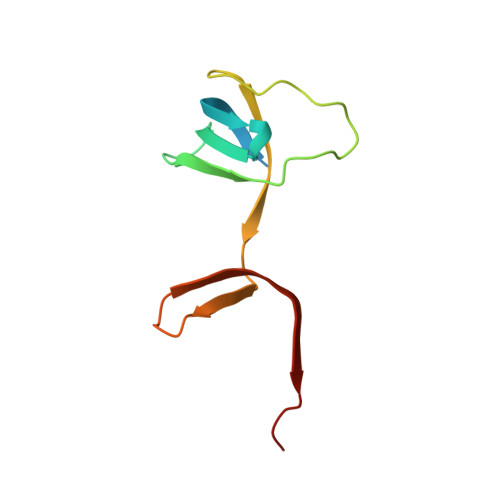A Segment of Cold Shock Protein Directs the Folding of a Combinatorial Protein
De Bono, S., Riechmann, L., Girard, E., Williams, R.L., Winter, G.(2005) Proc Natl Acad Sci U S A 102: 1396
- PubMed: 15671167
- DOI: https://doi.org/10.1073/pnas.0407298102
- Primary Citation of Related Structures:
2BH8 - PubMed Abstract:
It has been suggested that protein domains evolved by the non-homologous recombination of building blocks of subdomain size. In earlier work we attempted to recapitulate domain evolution in vitro. We took a polypeptide segment comprising three beta-strands in the monomeric, five-stranded beta-barrel cold shock protein (CspA) of Escherichia coli as a building block. This segment corresponds to a complete exon in homologous eukaryotic proteins and includes residues that nucleate folding in CspA. We recombined this segment at random with fragments of natural proteins and succeeded in generating a range of folded chimaeric proteins. We now present the crystal structure of one such combinatorial protein, 1b11, a 103-residue polypeptide that includes segments from CspA and the S1 domain of the 30S ribosomal subunit of E. coli. The structure reveals a segment-swapped, six-stranded beta-barrel of unique architecture that assembles to a tetramer. Surprisingly, the CspA segment retains its structural identity in 1b11, recapitulating its original fold and deforming the structure of the S1 segment as necessary to complete a barrel. Our work provides structural evidence that (i) random shuffling of nonhomologous polypeptide segments can lead to folded proteins and unique architectures, (ii) many structural features of the segments are retained, and (iii) some segments can act as templates around which the rest of the protein folds.
Organizational Affiliation:
Centre for Protein Engineering and Laboratory of Molecular Biology, Medical Research Council Centre, Hills Road, Cambridge CB2 2QH, United Kingdom.














